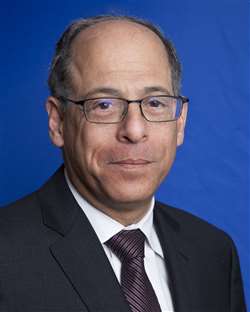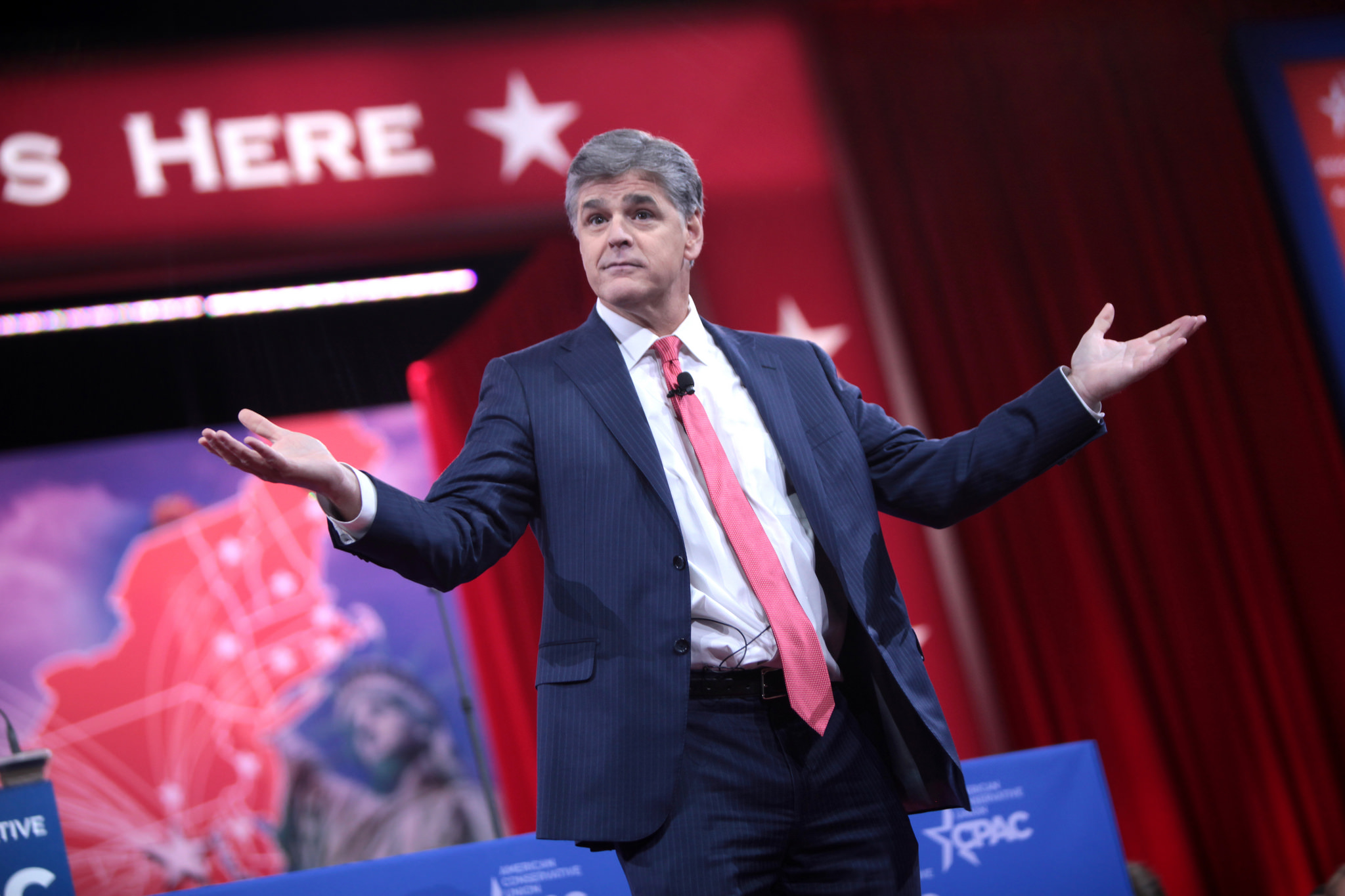Rob Balin, a media lawyer at Davis Wright Tremaine, is the reason we know that Sean Hannity was Trump lawyer Michael Cohen’s secret client. Balin attended the Monday hearing in Southern District Court in Manhattan, following the raid of Cohen’s offices, to represent the interests of several news organizations, including ABC, The New York Times, CNN, the Associated Press, and Newsday.
When it seemed the judge would keep the client’s identity under seal, Balin stood up in the second row of the gallery, apologized for interrupting, introduced himself, and informed the court of a “public access issue.” Then, with the court’s permission, he approached the podium and argued that the client’s identity should be disclosed publicly.
ICYMI: A pretty bad typo in the LA Times
He noted, among other things, the “intense public interest” in the hearing, and he urged the court to recognize a First Amendment right of access to the client’s identity. He quoted Chief Justice Warren Burger’s majority opinion in the 1980 case Richmond Newspapers v. Virginia: “People in an open society do not demand infallibility from their institutions. But it is difficult for them to accept what they are prohibited from observing.”
Cohen’s attorneys failed to offer a persuasive counterargument, and ultimately Judge Kimba Wood ordered them to disclose publicly the secret client’s identity. And when they did, Hannity’s name drew a chorus of gasps from the gallery.
Balin, who represents clients in all aspects of media law and teaches the subject at Columbia Law School, talked with CJR about his experience at the Monday hearing.
Why were you at the hearing?
This all starts Friday [April 13], when my partner Rachel Strom appeared in court on ABC’s behalf. The judge planned to close certain hearings when receiving information that might be privileged. There was discussion about whether the names of Mr. Cohen’s clients are privileged. Rachel made an argument based on First Amendment access principles: You can’t close the court or seal documents unless there’s a compelling interest of the highest order. The judge understood, and she directed Mr. Cohen’s attorneys to submit a letter identifying Mr. Cohen’s clients. The letter was filed Monday morning, publicly. It said Mr. Cohen had non-legal clients and three legal clients: President Trump, the Republican fundraiser Elliott Broidy, and an unnamed third client who did not want to be identified. The attorneys argued that they had an ethical obligation not to disclose that client’s identity.
ICYMI: Fox News issues statement in response to Hannity controversy
I appeared at the Monday hearing to represent a group of news organizations. (Strom couldn’t be there because she was conducting depositions.) I had a funny feeling that an access issue might arise with respect to the third client. And the hearing had all the makings of a major media event: Mr. Cohen himself was supposed to be there. The lawyer for Stormy Daniels had said she would be there. The president’s lawyer [Joanna Hendon] was there.
How did you go from spectator to participant?
I was not permitted to sit in the well with the lawyers, so I was in the second row of the public gallery. I gave my card to the court clerk and said that there was a chance I would have to speak on behalf of the public and press. Later, when the judge said she was willing to take the client’s information under seal, that was my cue to get up. I introduced myself and listed off my clients, and the judge invited me to the podium, where I began my argument. I pointed out, as Strom did on Friday, that the names of clients were not privileged and that there is a First Amendment right of access to court hearings whose purpose is to enable the public and press to monitor their institutions. I pointed out that most of the seats in the room were occupied by members of the press, and I wrapped up by quoting Chief Justice Burger in Richmond Newspapers v. Virginia. The judge eventually ordered Mr. Cohen’s attorneys to reveal the client’s name. That’s when we had a truly Perry Mason moment: The attorney said it was Hannity, and there was a collective and audible gasp in the room. I’ve been practicing law for a long time, and I’ve never seen anything like that. Electronic devices are generally prohibited in the court, too, so five or 10 reporters rushed from the room to get that news out as soon as possible. It was like a scene from an old-time movie.
How many times in your career have you interrupted a hearing to make an argument from the gallery?
I’ve been practicing for more than 30 years, and this, I believe, was the first time. I’m usually at counsel’s table, or at least I’m sitting in a chair in the well of the courtroom. Rachel did the same thing Friday, though. It’s what we had to do. The judge didn’t consider it at all disrespectful, because she understood why we were there.

Media lawyer Rob Balin. Courtesy photo.
You said you had a funny feeling that an access issue would arise. Had you developed your argument in advance? Or were you developing it in the moment?
I developed it in advance. When I saw the letter filed by Mr. Cohen’s attorneys, I realized that the press was the reason they didn’t want to reveal the client’s name. They thought it would be embarrassing to the client. I predicted that that would be the issue at the Monday hearing, so I was ready with my argument. That’s what lawyers do. We prepare. It was a good day for the Fourth Estate on both Friday and Monday, but the lawyers who do this kind of work, we’re in and out of court all the time making access arguments. Sometimes you can prepare. Other times you can’t. Rachel had something like 15 minutes notice on Friday that she needed to be in court for ABC.
I realized that the press was the reason they didn’t want to reveal the client’s name. They thought it would be embarrassing to the client.
What did you think when Cohen’s counsel revealed that the client in question was Sean Hannity?
I had no idea who it might be, and like everyone else, I thought, wow. My role, though, was to be sure that whatever information was shared that day, it was shared with the public. The story goes on from there. As journalists say, they cover the story, and they’re not part of it. That goes for their lawyers, too. We help them cover the story.
The story for now is that a good judge has kept the courtroom open, and when she got pushback about the name of the third client, she allowed a representative of the press—me—to be heard. What I find heartening is that our institutions are functioning. The procedure Monday went as it should have under First Amendment jurisprudence.
Your name has appeared in countless news stories in the past 36 hours. What have you been hearing from family, friends, colleagues, and others?
I’ve had my 15 minutes of fame. It’s bemusing. And it was fun in some respects. I teach media law at Columbia Law School, and I had to rush from court Monday to class, where we talked about what happened in court. It was a great teachable moment. I’m not on social media, but what I’ve seen from the tweets that have been shared with me, well, it’s encouraging to see so many Americans standing up and cheering for the First Amendment. That, more than seeing my name in print, gives me a warm feeling. In the courtroom Friday and Monday, the First Amendment was alive and well.
Laura Handman, who sits on CJR’s Board of Overseers, is a partner at Davis Wright Tremaine, along with Rob Balin.
Jonathan Peters is CJR’s press freedom correspondent. He is a media law professor at the University of Georgia, with posts in the Grady College of Journalism and Mass Communication and the School of Law. Peters has blogged on free expression for the Harvard Law & Policy Review, and he has written for Esquire, The Atlantic, Sports Illustrated, Slate, The Nation, Wired, and PBS. Follow him on Twitter @jonathanwpeters.

